It's time to build a better boss monster. No longer will you have to endure your players poking at your monsters' ankles until their hit points are whittled away, and the creature dies from a fatal blow to its big toe. Instead, your heroes can search a near-invincible foe for a weakness, try to exploit it, and fight hard to keep striking the monster where it hurts as it tries to protect its vulnerability. This house rule is great for gaming groups that want a more dynamic and thoughtful D&D combat experience—perhaps your group has very few combat encounters and you want them to be meaningful, or perhaps your game has lots of battles and you want your boss encounters to stand out from the trash mobs.
Because of the prevalence of weak point mechanics in video games like The Legend of Zelda, Shadow of the Colossus, and literally hundreds of other examples, this house rule may make your D&D game feel more like a game than a simulation of fantasy life. This doesn’t have to be the case: fantasy and mythology are flush with stories of legendary warriors and monsters with fatal physical flaws. Consider Achilles and his famous heel from The Iliad, the heavily armored Imperial walkers that could only be defeated by ensnaring their legs in The Empire Strikes Back, and the mighty dragon Smaug’s only vulnerability in The Hobbit.
Before using this house rule in your game, consider telling your players outright that your boss monsters will have a weak point that they can seek out to make defeating it easier.
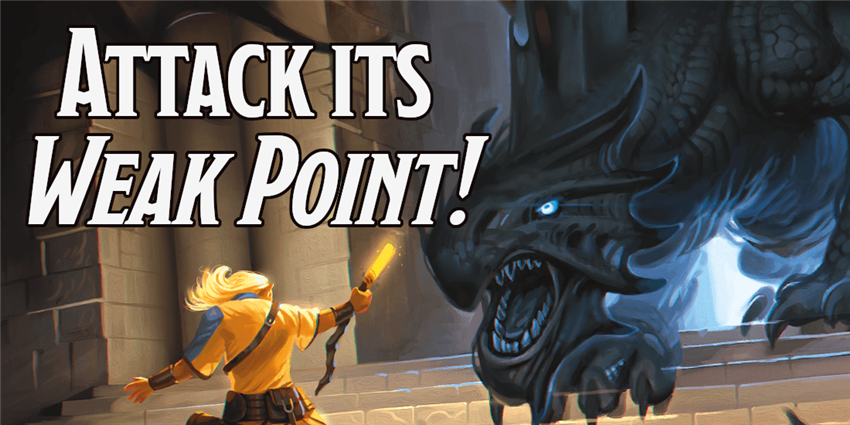
Attack Its Weak Point
The black dragon loomed above a fighter, a wizard, and a rogue, acid dripping from its scarred and twisted maw. “Death will come quickly… if you do not struggle,” it gleefully rasped. “Untevor the Sable has mercy upon compliant prey.”
The wizard desperately thought back to days in the academy long past, when she read the entirety of the Draconomicon from cover to cover in a weekend. “Untevor… the Sable… Oh!” She turned to the keen-eyed elven rogue that crouched beside her. “An old legend told by Skagri the Bard says that, in the Year of the Sundered Shield—”
“Get to the point!” the rogue hissed.
“Uh, Untevor the Sable has a scale tattooed with a rune of invulnerability! The source of his power! Can you find it?”
A line of acid exploded from the dragon’s mouth. The rogue moved almost before the blast left the beast's crackling maw, but the fighter and wizard only barely dodged in time. The fighter winced as a bright pink patch of burning flesh showed through his tunic, and tiny, sizzling pinholes sizzled all over their robes and armor. “Warrior!” shouted the rogue. “Get near the thing. Better to deal with its claws than its acid. I’ll look for the rune, and get your sword ready to carve the damn thing off!”
Some legendary monsters are nigh-invulnerable to attacks both physical and magical. However, despite being covered from head to foot in impenetrable scales, enchanted armor, or arcane tattoos, there is one tiny gap in their armor. A single weak point that their foes can exploit. This house rule was designed to only be applied to legendary monsters—that is, creatures that one or both of the following traits: Legendary Resistance or Legendary Actions. A full list of all legendary creatures can be found using the D&D Beyond Monsters tool. However, giving any monster 2 uses of the Legendary Resistance feature and two Legendary Action uses that it can use each turn (see Legendary Creatures in the Monster Manual) is enough to turn any monster that you want to use as a solo boss encounter into a legendary creature.
Invulnerablity
 A legendary creature that uses this weak point house rule will be called an invulnerable creature throughout this article. An invulnerable creature gains the following benefits:
A legendary creature that uses this weak point house rule will be called an invulnerable creature throughout this article. An invulnerable creature gains the following benefits:
- It is immune to bludgeoning, piercing, and slashing damage, in addition to its other damage immunities.
- It is resistant to all other forms of damage.
If the creature would gain immunity to a damage type it's already resistant to, the new immunity supersedes its resistance.
Weak Points
An invulnerable creature also has a weak point somewhere on its body that, if attacked, bypasses the creature’s damage resistances and immunities, and may even confer an additional drawback.
Finding the Weak Point. Identifying a creature’s weak point requires you to take the Search action to physically examine the monster. Make a Wisdom (Perception) or Intelligence (Investigation) check (DM’s choice) with a DC equal to 8 + the creature’s challenge rating. On a success, you identify the creature’s weak point. Once the weak point has been identified, you can tell your allies about it (no action required). Only a creature that knows the precise location of a creature’s weak point can attack it.
Legends of the Weak Point. Some invulnerable creatures are so infamous that legends are told of their greatness—and of their fatal weakness. If such a legend exists (at the DM’s discretion), you can use your action to make an Intelligence check with a DC equal to 8 + the creature’s challenge rating. Your DM may allow you to apply your proficiency in the Arcana, History, Nature, or Religion skill depending on the nature of the creature. On a success, you and any creatures that you tell of the legend have advantage on Wisdom (Perception) and Intelligence (Investigation) checks to identify the weak point.
Attacking the Weak Point. Once you’ve identified an invulnerable creature’s weak point, you can target it with a weapon or spell attack. The weak point has the same Armor Class as the invulnerable creature. In order to attack the weak point, you must take a –5 penalty to hit the small target. If the attack hits, it ignores the invulnerable creature’s damage resistances and immunities and deals an additional 10 damage. An attack against a monster’s weak point may also confer additional benefits, as described in “Variant Weak Points,” below.
However, some monsters’ weak points are obvious, like a beholder’s eye. If you can guess a creature’s weak point outright, and the DM determines that it’s trivial to spot the weak point, you can attack it without making a check to identify it. You still must take a –5 penalty to hit the small target. If your guess is correct, you gain the benefits of attacking the weak point (see “Attacking the Weak Point,” below). If your guess is incorrect, the attack is made against the invulnerable creature as normal.
Rules Tip: Attacks Only
Be aware that only attacks can affect a creature’s weak point. Effects that deal damage but don’t require an attack roll, such as spells or magical effects that require a saving throw, can’t specifically affect a creature’s weak point.
Self-Defense
Once a monster realizes its weak point is being targeted, it does its best to cover it. A beholder might partially close its central eye so that only a tiny slit remains for it to peer through, or a dragon might land and wrap one wing around the vulnerable soft patch in its chest. An invulnerable creature can use one of its legendary actions (or a bonus action on its turn) to cover the weak point until the start of its next turn.
Most creatures that cover their own weak point are able to grant that point three-quarters cover (note that this increases the AC of the weak point, making it even harder to hit). However, some creatures might be able to completely cover a weak point, or only cover a small portion of it, granting that point total cover or half cover at the DM’s discretion. If a weak point has total cover, the DM should include a way to remove that cover, such as by stunning or frightening the creature. Also at the DM's discretion, a creature covering its weak point might not be able to fight as effectively or take certain actions.
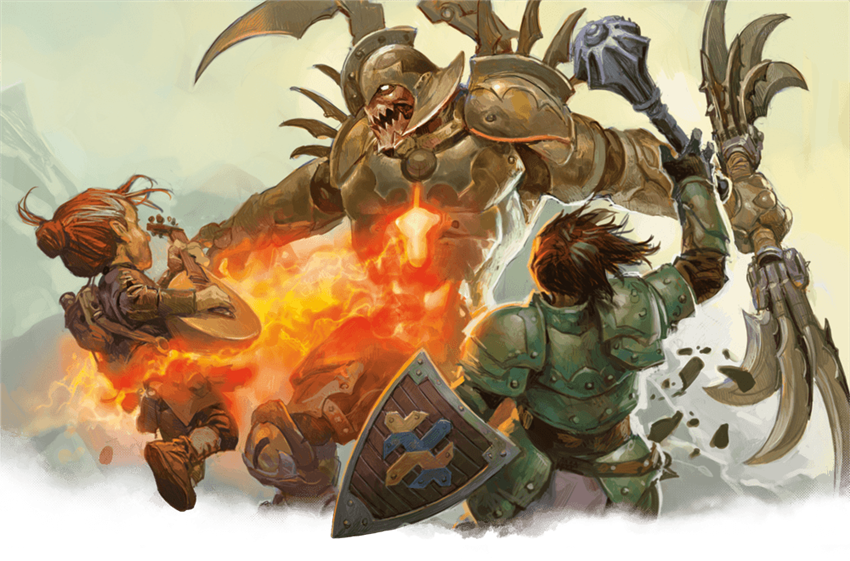
Variant Weak Points
The rules presented above are the core of this house rule. However, this system is designed to be incredibly flexible, allowing you to create monsters with many varied types of weak points to suit the story you want to tell. Consider using these variants on the rules presented above to keep your boss encounters from becoming rote.
Staggering Weak Point
This variant allows an attack against a creature’s weak point to bypass its damage immunities and resistances as normal, but doesn’t deal an additional 10 damage. Instead, the creature gains a condition that reduces its ability in combat. A beholder struck in its central eye might be blinded until the start of its next turn as a protective mucus forms. The best conditions for the DM to impose for striking a weak point are blinded, deafened, poisoned, and prone, since their effects are relatively minor.
The stunned condition can be applied, but only if it lasts until the start of the invulnerable creature’s turn. This lets the characters take advantage of the defensive penalties of the stunned condition, but without skipping the invulnerable creature’s next turn.
Weak Point Without Invulnerability
This variant changes the benefits of becoming an invulnerable creature. Instead of granting the creature the usual benefits of becoming invulnerable, maximize the creature’s hit points. For instance, an aboleth typically has 135 hit points, which is equal to the average of its hit dice (18d10) plus 36 (its Constitution modifier of +2 applied to each of its 18 hit dice). Instead of averaging its hit dice, maximize them for a result of 216 (180 + 36) hit points.
This alternative method makes it just as viable to damage the creature normally, but introduces a new location that makes it easier to defeat your foe. Perhaps this weak point is a runic sigil of vitality that was drawn by a shaman upon the creature’s skin, and the source of the magic is its weakest point.
Removable Invulnerability
This variant gives a weak point its own set of hit points. Once this weak point is destroyed, all of the benefits of invulnerability granted to the invulnerable creature are dispelled. In this case, the weak point should have hit points equal to about one-third of the monster’s hit point maximum. And as usual, the weak point isn’t subject to the damage resistances or immunities granted by being an invulnerable creature.
For example, an adult black dragon with a magical sigil of invincibility inscribed upon one of its innumerable scales is an invulnerable creature so long as the ensigiled scale is attached to its body. The dragon has 195 hit points, so cleaving the scale from the dragon’s body requires 65 points of damage be dealt to the weak point. Once it’s gone, its magic fades completely and the dragon can be damaged normally.
Recovering Invulnerability. As an additional variant, a monster could have a destructible weak point that recovers all of its hit points when certain conditions are met. A red dragon could inscribe a new rune of protection upon itself, thus restoring its weak point to full hit points, whenever it uses its Fire Breath. In this case, the weak point should have significantly fewer hit points; approximately one-sixth the invulnerable creature’s maximum hit points. To make the fight even more challenging, the weak point could appear on a different part of the creature's body whenever it is recovered.
Sequential Weak Points
This variant allows you to create creatures with multiple weak points. This variant works best with Gargantuan creatures, like ancient dragons or the legendary tarrasque, where their incredible size can make reaching any one specific weak point a challenge. A creature with three weak points may have only one be active at the beginning, and then have its other weak points activate sequentially as the creature takes damage—which in turn causes previous weak points to be destroyed or be sealed shut, granting them total cover. Divide the invulnerable creature’s hit points into a number of segments equal to the number of weak points it has, with one weak point being destroyed and a new one activating whenever one segment of the creature’s hit points is exhausted.
For example, a tarrasque with a weak point on its tail would require a party to attack it from behind until that weakness was exhausted and a new weak point activates between its shoulder blades. This new weak point would require the characters to get on the titan’s back in order to damage it. This gives your fight a sense of progression and requires you to react dynamically to the changing situation.
Multiple Active Weak Points. Alternatively, all of the creature’s weak points could be active at once. Once one of these weak points takes damage equal to one segment of the creature’s maximum hit points, it closes. For example, consider a tarrasque that has one weak point on all four of its legs that are open at once, and one on its head, which can only be damaged once all four of its legs are defeated. Each weak point can only take damage equal to 1/5 of the tarrasque’s maximum hit points before closing and becoming immune to damage. This requires you to choose between focusing fire or dividing your forces to conquer more of the creature at once.
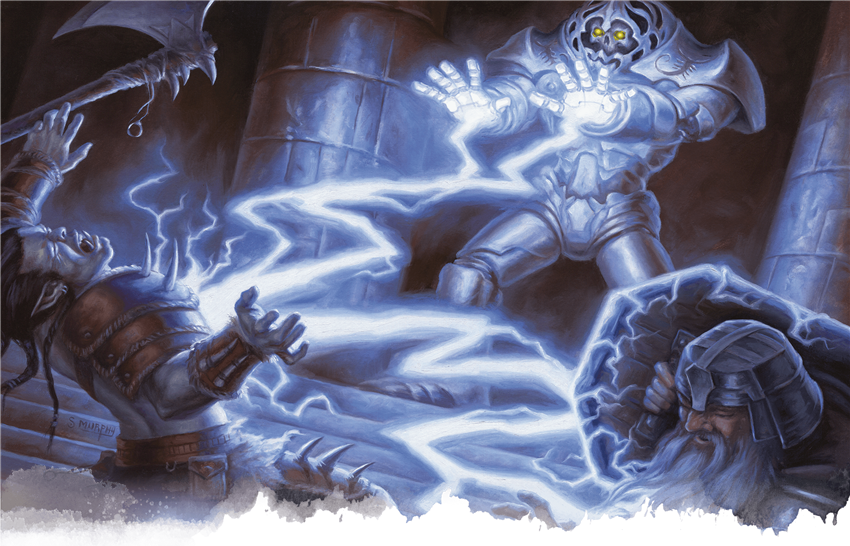
Challenges
With the house rule itself explained, let’s address challenges that you may encounter when implementing it, and how you can avoid them.
The “Called Shot” Problem
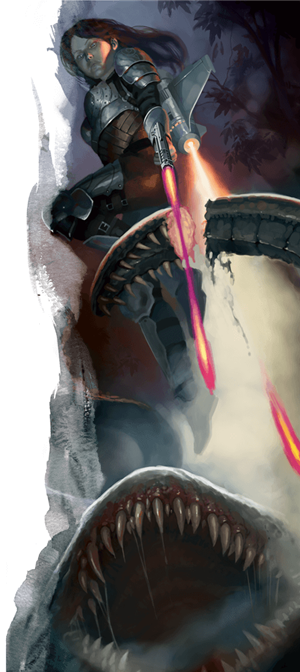 Many D&D players encounter problems when implementing a called shot mechanic—that is, a mechanic that allows them to target a specific part of a foe rather than just attacking the foe itself—because it breaks the standard assumptions of D&D.
Many D&D players encounter problems when implementing a called shot mechanic—that is, a mechanic that allows them to target a specific part of a foe rather than just attacking the foe itself—because it breaks the standard assumptions of D&D.
D&D’s combat is an abstraction. The concepts of attack bonuses, Armor Class, and hit points are particularly nebulous in order to make combat faster. Attack bonuses and Armor Class in particular always assume that the attacker is using the most powerful part of their weapon to attack the most vulnerable part of the defender. Likewise, it’s easy to think of hit points as the amount of literal sword cuts in their flesh a creature can take before keeling over dead. Called shot systems tend to break the realism of D&D’s abstract combat.
Imagine a character making a called shot at an ogre’s head, shooting an arrow clean through its skull, and then having the attack only deal a paltry amount of extra damage. Then imagine doing that three turns in a row, practically turning the creature’s skull into a sieve. How is that ogre still alive? Or, on the other hand, imagine a headshot actually working as an instant kill, allowing a 1st-level character to effectively deal 59 damage in a single shot to a full-health ogre.
This house rule suffers somewhat from the same problems as any subsystem that lets you target a specific point on a creature’s body. However, problems are mitigated by restricting how broadly it can be used: only certain monsters have specific weak points, and giving a monster a weak point also gives it increased defenses elsewhere. This puzzle-solving element specifically enhances boss encounters, rather than modifying every minor encounter in the game.
If you or your players are having trouble reconciling additional damage from called shots (the “headshot” problem, above), remember that hit points aren’t solely vitality. They’re an abstract representation of “physical and mental durability, the will to live, and luck.” Hitting a monster’s weak point may not have done much damage physically, but the power behind the blow could have winded the creature or left it shaken. On the other hand, a monster’s weak point might be much harder to pierce than a human’s skin! It’s easy to imagine a beholder’s eye or a lich’s exposed, necrotically-animated heart being as tough as a bulletproof vest. It’s a mythical monster, after all!
Determining Challenge Rating
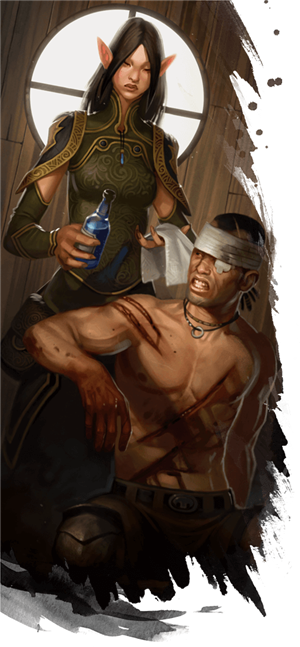 This subsystem has the chance to make an invulnerable creature much more challenging (or much easier, depending on how adept your characters are at identifying a creature’s weak point) than the legendary creature it was based on. As a rule of thumb, treat the invulnerable creature as the same challenge rating as the legendary creature it was based on; the advantages of its heightened defenses are generally canceled out by its new weaknesses.
This subsystem has the chance to make an invulnerable creature much more challenging (or much easier, depending on how adept your characters are at identifying a creature’s weak point) than the legendary creature it was based on. As a rule of thumb, treat the invulnerable creature as the same challenge rating as the legendary creature it was based on; the advantages of its heightened defenses are generally canceled out by its new weaknesses.
The first time you use this house rule, you may wish to treat the invulnerable creature’s CR as if it were 2 higher than the legendary creature it was based on. This is due to the fact that your players may waste some of their attacks flailing uselessly against the invulnerable creature’s hide before picking up on what’s going on. If you see this happening, you may not have provided enough information to your players—or you presented it too subtly.
A way to get around this might be to include minion creatures with very obvious weak points in the dungeon leading up to this creature; undead with exposed hearts, constructs with exposed wiring, or spiders with giant single eyeballs—all glowing targets for one-hit kills against these pathetic monsters. Now that your players have learned that monsters can have weak points, they might reach the conclusion that their greatest foes have hidden locations that can be specifically targeted to deal massive damage.
What Weak Points Can I Use?
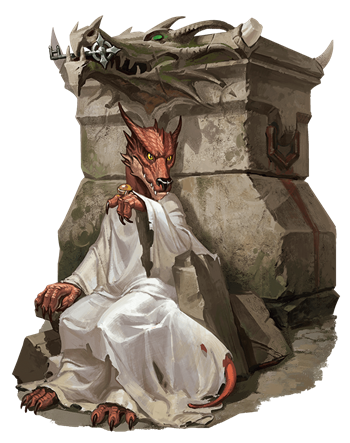 Not all legendary creatures have weak points as obvious as a beholder’s central eye. Most legendary creatures in D&D are actually humanoids with particularly powerful magic. When creating an invulnerable creature from a monster that doesn’t have any obvious anatomical weak points (other than, say, its head), what are some other options?
Not all legendary creatures have weak points as obvious as a beholder’s central eye. Most legendary creatures in D&D are actually humanoids with particularly powerful magic. When creating an invulnerable creature from a monster that doesn’t have any obvious anatomical weak points (other than, say, its head), what are some other options?
- A magically enlarged body part, such as an eye, hand, nose, or mouth, or a mechanical crab claw.
- A magical rune, about two inches in diameter, hidden somewhere on its body that powers a spell of invulnerability.
- Armor straps on a creature covered head to toe in armor; attacking these straps causes the armor to fall off in pieces.
- A spiritual core that maintains the creature’s physical form, like a heart of ice inside the water elemental princess Olhydra, or a talisman hidden in a mummy lord’s wrappings.
- An old wound carved in a demon lord’s chest by Zariel’s holy blade.
- A stone golem with a deep crack in its back hidden by a tapestry it wears like a cape.
- A warlock so closely bonded to their familiar that they share one another's life force; only wounding the familiar can wound the warlock.
- A magical ring of invulnerability worn upon the creature's finger, with amber light spilling from its enchanted gemstone.
What do you think of this house rule? Would you use it in your home game? What other variant weak points can you think of?
I mused about this topic on Twitter in December 2019. This article is based off of the stray thoughts I proposed and the feedback I received in that original Twitter thread.
Create A Brand-New Adventurer Acquire New Powers and Adventures Browse All Your D&D Content
 James Haeck is the lead writer for D&D Beyond, the co-author of Waterdeep: Dragon Heist, Baldur's Gate: Descent into Avernus, and the Critical Role Explorer's Guide to Wildemount, a member of the Guild Adepts, and a freelance writer for Wizards of the Coast, the D&D Adventurers League, and other RPG companies. He lives in Seattle, Washington with his fiancée Hannah and their animal companions Mei and Marzipan. You can find him wasting time on Twitter at @jamesjhaeck.
James Haeck is the lead writer for D&D Beyond, the co-author of Waterdeep: Dragon Heist, Baldur's Gate: Descent into Avernus, and the Critical Role Explorer's Guide to Wildemount, a member of the Guild Adepts, and a freelance writer for Wizards of the Coast, the D&D Adventurers League, and other RPG companies. He lives in Seattle, Washington with his fiancée Hannah and their animal companions Mei and Marzipan. You can find him wasting time on Twitter at @jamesjhaeck.








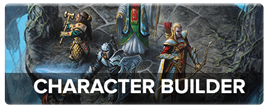
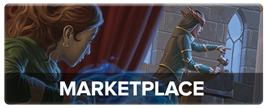
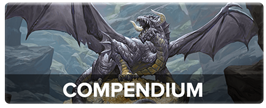
-
View User Profile
-
Send Message
Posted Feb 3, 2020Ah a man of culture I see. OutsideXBox?
-
View User Profile
-
Send Message
Posted Feb 3, 2020The next time I run a kaiju fight, I will incorporate this. I had a battle between a terrasque and a repurposed adamantine obliterater that was piloted by two of my PCs and they melted it. Next time, it will have a weak point. Thank you for sharing this.
-
View User Profile
-
Send Message
Posted Feb 3, 2020I like the versatility of using these rules. I was just looking for something like this due to my campaign finale coming up to a twenty year long campaign and I feel like the last encounter is going to be tough when the main villain demon begins to wade into combat alongside its minions. I think these rules will help my players defeat the main villain if things start to turn against them. I like to have back up plans like this in my back pocket for times when I think the players could need a little help in a battle.
I will be copying this to my campaign house rules to use for major villain and monster fights the players could run into.
-
View User Profile
-
Send Message
Posted Feb 3, 2020If you think that I am saying that martials shouldn't exist, then you're misunderstanding my point.
My point is that parties of adventures tend to have both martials and casters. You can do a party of all martials or all casters but things tend to go better with a mix. Invulnerable monsters per this variant make it so that both casters and martial characters need to approach the fight differently in order to be successful. Sure a caster could say, "I can do normal damage due to this feat I have, so I'll just attack it" but being the only person in the party harming the monster would lead to any remotely intelligent monster getting up close and personal with them, which marital characters would normally be good at preventing. So sure, you can look at this and say "martials shouldn't exist because they require me to change tactics" but that's the point of the variant. To make monsters that change the way a party approaches a fight.
-
View User Profile
-
Send Message
Posted Feb 4, 2020Sounds like a fun idea, but the -5 penalty to hit the weak point gives me THAC0-related PTSD. Wouldn't it just be easier to say the AC of the weak point is 5 higher than the invulnerable creature?
-
View User Profile
-
Send Message
Posted Feb 4, 2020If you want to think about it that way, that's fine. The –5 to hit/+10 to damage mirrors precision-based feats like Sharpshooter and Great Weapon Master.
-
View User Profile
-
Send Message
Posted Feb 4, 2020Fun with math rocks! Lots of ways to arrive at the same solution. Thanks for putting this together, James! I'm excited to try it.
-
View User Profile
-
Send Message
Posted Feb 4, 2020I've used called shots to give specific debuffs, like shooting out an opponent's eyes to make them blind.
-
View User Profile
-
Send Message
Posted Feb 4, 2020After talking a bit I want to give my thoughts on the variant rule in detail:
First of all, having additional layers of defenses for legendary creatures is vital since Legendary Resistance does nothing to prevent the monster from getting alpha striked and wiped out by an optimized striker through raw damage alone. So for that, a template that makes legendary monsters more difficult to kill with raw damage is a good point. There's a few problems with the template, as seen in the comments, however:
It's disproportionately limiting to martials. Since it gets an outright immunity to most weapon damage, the vast majority of weapon-using classes (including a choice few casters such as Valor Bards and Hexblades) will no longer have the ability to contribute to defeating the monster. This is especially bad with the likes of Fighters and Barbarians, who very often lack the means of contributing to combat in any other way. With the inability to damage the foe, they will not be able to draw fire for their more vulnerable allies, either.
It's exceedingly impractical to expose the weak spot. The vast majority of legendary monsters are over CR 10, meaning that it is likely to take several turns to unveil the weak spot with checks unless you are absurdly optimized for Perception or Investigation. Turns you'd rather use to keep your allies in shape, maintain buffs or deal with potential minion enemies. Covering the weak spot only makes this even worse as it's barely an action cost for the legendary creature, who may cover itself right after you went through the effort of exposing its weak spot. It doesn't help that it can block those conditions with Legendary Resistance, meaning that it's much easier to just rely on save or suck spells and hammer with elemental damage (especially with the Elemental Adept feat which bypasses resistance).
Finally, a few words to the variant rules posited:
Staggering Weak Point. It's neat to disable a creature with how much of a pain it is to bother with the weak point mechanic, but for it to wear off the moment the creature moves again is quite useless - especially if you're acting right before it! I'd rather take the extra damage then.
Weak Point without Invulnerability. It solves the problem of not allowing martials to attack the creature but the payoff for finding and attacking the weak point is still too low to warrant attempting it.
Removable Invulnerability. Probably the most practical implementation as long as the creature doesn't just regain it with little effort. Dampens the B/P/S immunity a little and actually gives a substantial payoff for going through the trouble of targeting the weak spot.
Sequential Weak Points. Where the last two variants mitigate the main issues of invulnerable creatures, this one greatly magnifies it. Now the benefits for targeting the weak point are even lower and you need to make even more stellar skill checks. It doesn't help that the martials in your example are expected to also make exceedingly difficult movements close to a creature with enough damage output to kill any melee opponent in 2-3 rounds tops who can also swallow them whole (negating any chance of escape with its invulnerability).
-
View User Profile
-
Send Message
Posted Feb 4, 2020I think the idea of exposing a weak point, as in searching for it and communicating the location to the party so that they can target it, works. I do think that the DC is too make or break as it stands. An Ancient Red Dragon would require a DC32 Perception or Investigation check, during a fight which would be outright terrifying to make and that's assuming the party knows that the Dragon is invulnerable in the first place. The DC on the weak spot should really be based on how well the spot is hidden or the size of the creature, rather than how strong the creature is.
-
View User Profile
-
Send Message
Posted Feb 4, 2020Love this. Just about finished playing the latest Zelda game, Breath of the Wild, and one of the giant enemies, the Hinox, has a single glowing eye. He knows it's his weak spot, so he spends the whole fight trying to cover it up so you can't just shoot arrows at it. Trying to get him to drop his arm is a great way to weaken him.
-
View User Profile
-
Send Message
Posted Feb 4, 2020Thanks for such detailed feedback! I appreciate getting it.
Because a lot of your critique is relates to taking the Search action and making checks to find the weak point, I want to address a finer point that might have easily gotten lost. Not all weak points have to be pixel hunts. Going up against a beholder, a person can easily guess what the weak point is and attack the central eye (taking a –5 penalty to hit) without having to make a check to "find" the spot. If they guessed right, the extra effects happen as normal. A heavily armored foe's exposed face is another clear spot. And for creatures with a rune of invulnerability, the size of the rune could be quite large; the size of a human being or even larger on Huge or Gargantuan foes—like the weak points on the colossi in Shadow of the Colossus.
Based on feedback like this, it seems like the use of the Search action to find a weak point should really be the secondary option, as a way to get a hint to find a particularly well-concealed weak point. At any rate, thanks again for your thoughtful analysis.
-
View User Profile
-
Send Message
Posted Feb 5, 2020I like the idea of setting DC's for certain maneuvers so people aren't just rolling attack and damage. Does a player want to cut off a creature's hand while it's dashing around? Set the DC around 20 or 25. If a player wants to just pin a monster in place so it can't move, set the DC for something a little lower. I'm definitely going to try this out to try and make battles a bit more flavorful.
-
View User Profile
-
Send Message
Posted Feb 5, 2020How would you run someone using a magic missile spell?
-
View User Profile
-
Send Message
Posted Feb 5, 2020I would run it as the missiles always hit the creature, but can't target specific points. You can't control exactly where the missiles hit, but they do hit; it's as if they have a life of their own.
-
View User Profile
-
Send Message
Posted Feb 5, 2020I think this can improve a lot of boss encounters by implementing this mechanic but it could also be useful against other things such as cutting the straps of a basic enemy to drop their armor to make them easier to hit and give damage bonuses.
-
View User Profile
-
Send Message
Posted Feb 5, 2020I allow called shots, but instead of doing the -5 penalty, I just say disadvantage. That decreases the likelihood that they'll crit on a body part.
-
View User Profile
-
Send Message
Posted Feb 7, 2020I intend to use this in my next boss fight. Combat too frequently becomes stale, and I'm always looking for ways to spice it up!
-
View User Profile
-
Send Message
Posted Feb 8, 2020I agree. Weak points definitely spruce up the combat a bit!
-
View User Profile
-
Send Message
Posted Feb 11, 2020Out of curiosity, why give immunity to B/S/P but only resistance to everything else? I know it starts to strain some sense of verisimilitude with certain damage types (*cough* Psychic *cough*), but it seems like it'd be better if it's either everyone can do half damage until they figure out the gimmick or everyone is just SOL until they figure out the gimmick. Caster's still have a leg up before the weakpoint reveal in that, unless you're exclusively set up for blasting, you can mess with it by hitting it with conditions or forced movement, but no one's actually making any progress on taking it down until the weak spot is found. You can chuck bombs at a Legend of Zelda boss all you want: unless bombs are specifically a weakness (Dodongo, Helmasaur), it's not going to help.
Some either ideas that might tilt the usefulness scale back towards martials and/or characters that rely on attacks rather than saves.
As for the target shielding it's weak point, I'd add in that doing so requires compromises. A Smaug knockoff can shield his missing scale with a wing, but while doing so he can't fly or use his wing buffet attack (the wing is kinda busy), and his bite and claw attacks have disadvantage (it's hard to hit things when your own wing is in the way). So he could just hunker down, but his options for getting rid of you are suddenly a lot more limited. There's gotta be some incentive not to just shield it all the time. (Having a dragon go in and out of shield his weak spot just makes me think of SNES era Final Fantasy games and each one's obligatory active-time battle tutorial/wait out the invincible phase boss fight.)
I'd also make it possible for, say, an opposed Strength check or something similar to force him to open up. And if you have a class feature or something that specifically disarms (such as if you are a Battle Master or Gunslinger), those can be used as well.